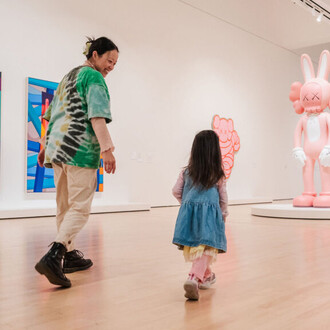Anglim Gilbert Gallery presents the DNA of Painting, an exhibition exploring the breadth of painters’ practice. The show features abstract works, figurative paintings and works that examine the role of painting today. The variety of styles and experiences also draws out similarities in context, technique and subject matter. The presentation demonstrates how shared attitudes and methods can produce vastly different artworks. It is a show to consider and celebrate the differences within a discipline.
Anne Appleby and John Zurier are represented by signature abstract paintings emphasizing the strength of experience of the painted surface. Appleby’s works in oil, and oil with wax, have rich, delicate surfaces that engage the eye as nature does. Like the rivers and trees that inspire her, her paintings' colors are layered and mutable. The eye's response is to bring them together as they shift. Zurier’s atmospheric abstractions evoke nature as sky and weather, but are grounded in their sensitivity to material. Every technical choice is considered, from the type of support or cloth used, to the weight and density of his medium holding the pure pigments.
Dean Byington and Travis Collinson appeal to representation and the traditions of landscape and figuration, but their subjects are altered by a haunting psychology. Collinson’s portraits recreate his figures in manipulated proportion and perspective that describe the sitter’s life and personality. Byington invents dream-like landscapes, depicting in fine detail dystopian settings where humans have inflicted changes upon the natural world.
Both Byington and Zurier were students of painter Joan Brown who went through her own metamorphosis in the 1960’s, changing her heavy impasto style (that had brought her recognition as a young painter) to thinly-painted bright, large format narrations about her own life and spiritual path. Brown taught many years in the Bay Area emphasizing to her students truthful conviction in the painter’s practice.
Leo Bersamina and Tomas Nakada paint with patterns observed in and inspired by our environment. Their abstractions combine references to society and patterns in behavior with colors, motifs and texture from nature.
Clare Rojas’ abstract compositions balance colorful forms with lines that marry the geometric and organic. She uses this language to describe and remember events in her life as singular as the phases of the moon.
David Huffman and Pamela Wilson-Ryckman are painters strongly engaged with abstract, formal composition. They subtly introduce representation with cultural signifiers as motifs in their works. Wilson-Ryckman paints images of Berlin architecture into her work with a collage-like effect. Huffman has created a technique of using the netting from a basketball hoop as a flexible stencil, resulting in a fluid grid.
In contrast, Tom Marioni’s hand-painted work is called a Sign, Not a Painting. Frances Stark’s finely rendered work in casein and gold-leaf is a neatly arranged computer screen — the gold icons are indeed iconic and represent content. David Ireland arranges circles of cut trees on a canvas, his initials burned into each disc, adding paint to each, transforming what had been a sculpture.














